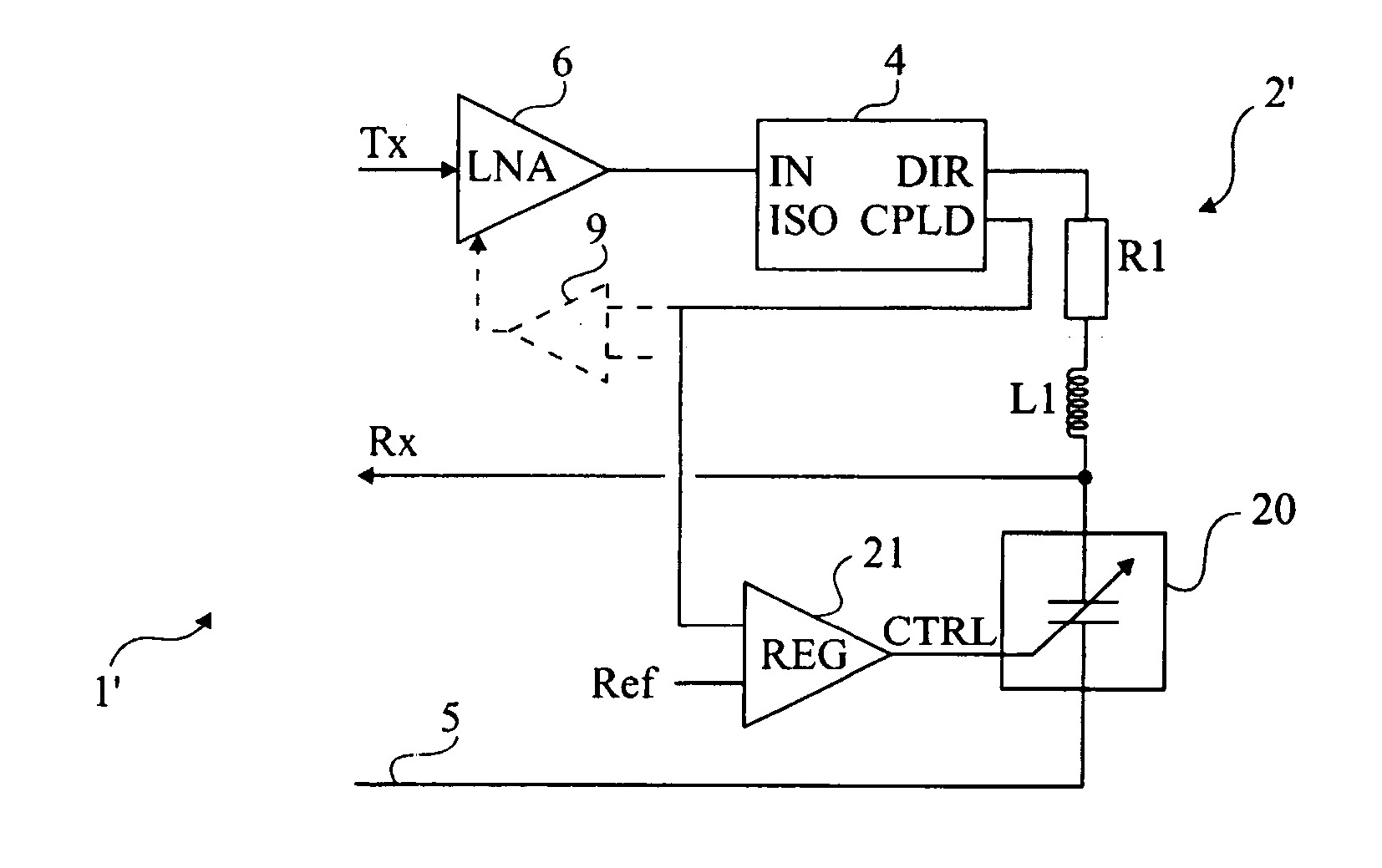Impedance matching of an electromagnetic transponder reader
a transponder reader and impedance matching technology, applied in the field of electromagnetic transponders, can solve the problems of inability to meet tuning accuracy constraints, inability to match signals received by demodulators, and inability to match signals, etc., to achieve stable impedance matching
- Summary
- Abstract
- Description
- Claims
- Application Information
AI Technical Summary
Benefits of technology
Problems solved by technology
Method used
Image
Examples
first embodiment
[0028]FIG. 2 partially and schematically shows a read / write terminal 1′ of an electromagnetic transponder (not shown) according to the present invention. Only part of the terminal's components have been shown in FIG. 2, the rest being similar to the structure of a conventional terminal such as illustrated in FIG. 1.
[0029]FIG. 2 shows an amplifier 6 (LNA) for providing an excitation signal to an oscillating circuit 2′ formed of a resistor R1, of an inductance L1, and of a capacitive element 20 in series, and a directional antenna coupler 4 connected between the output of amplifier 6 and oscillating circuit 2′.
[0030] According to the present invention, capacitive element 20 is a variable-capacitance element controllable by a signal CTRL. Signal CTRL is provided by a circuit 21 (REG) having the function of comparing the signal provided by antenna coupler 4 (terminal CPLD) with a reference value REF to control the value of the capacitance of element 20 to maintain the impedance of osci...
second embodiment
[0034]FIG. 3 shows a control circuit according to the present invention. In this example, circuit 21 providing control signal CTRL controls a MOS transistor 22 assembled in parallel on a series association of inductance L1 with resistor R1. Capacitor C1 being, for example, between this parallel assembly and output DIR of coupler 4 (as an alternative, between this parallel assembly and the ground if this is compatible with the control of switch 22). In this example, the respective positions of capacitor C1 and of inductance L1 have been inverted with respect to FIGS. 1 and 2. This has however no incidence upon the operation.
[0035] Preferably, received signal Rx is sampled from output CPLD of the coupler, which improves the signal-to-noise ratio. Such a connection is also possible in the embodiment of FIG. 2. The only precaution is for the time constant of the regulation loop to be much greater (at least ten times) than the back-modulation period to avoid loosing the back-modulation i...
PUM
 Login to View More
Login to View More Abstract
Description
Claims
Application Information
 Login to View More
Login to View More - R&D
- Intellectual Property
- Life Sciences
- Materials
- Tech Scout
- Unparalleled Data Quality
- Higher Quality Content
- 60% Fewer Hallucinations
Browse by: Latest US Patents, China's latest patents, Technical Efficacy Thesaurus, Application Domain, Technology Topic, Popular Technical Reports.
© 2025 PatSnap. All rights reserved.Legal|Privacy policy|Modern Slavery Act Transparency Statement|Sitemap|About US| Contact US: help@patsnap.com


